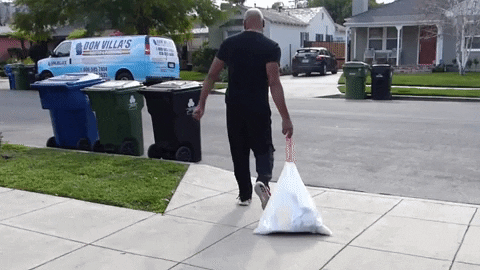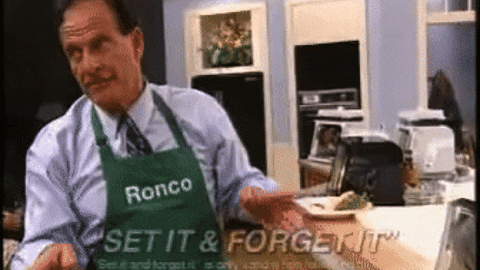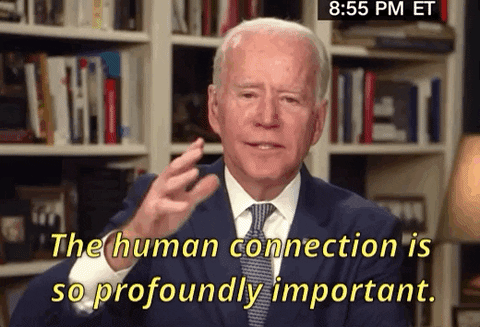Welcome to The Merchant Life, for retailers and retail enthusiasts wanting the insider perspective of all things retail.
Now let’s talk shop.
Literally, let’s talk shop and selling.
Waiting for your Prime delivery or checking TikTok to see what Northface and Gucci have in store for us has become part of our daily life.
But, if we’re shopping online, what’s happening to our favourite sales associate in the Saks shoe department?
Put down your credit card, do not checkout yet, and we will get right to it.
SELL SELL SELL!!!
You know that feeling you get when you walk into a car dealership and the sales associate begins to approach you.
Customers (for the most part) have their guard up when entering a retail store and the awkward exchange ensue.
“How can I help you today?”
“I’m just looking, thanks.”
Perhaps the customer knows what they want already, maybe they need a walk after the food court, maybe they really are JUST LOOKING.
On the other hand, we have been to luxury stores to find staff on the shop floor looking down at their phones as opposed to engaging customers.
Seriously.
If there are commissions to be earned and sales goals to be met, it’s baffling to think that retail staff would outwardly be on TikTok watching viral vids while on shift.
The reality is that it’s tough for sales people out there – either in person or over the phone – lousy salespeople providing a poor customer experience has ruined things for those who really want to do the job well. On top of that, poor leadership from sales management – micromanaging, leading by intimidation or lack of support – have relegated retail sales staff to be replaceable and highly disposable.
Combine this with a ever growing desire to shop digitally, COVID converting the majority of bricks-and-mortar stores into fulfillment centres and on demand services becoming the norm, the question becomes – what happened to the role of traditional selling in retail?
We spoke with Roger Simpson, a retail training and coaching expert with The Retail Solution, who said “The two biggest costs in retail are rent and staff.” Working in an industry that has conditioned customers to buy on promotion, there is a need to cut costs.
Simpson explains “Since it’s really hard to cut your rent, you cut your staff costs. This means less time for communication, less time for training and less time with customers as staff are replacing or tidying stock. What you end up with is a transactor.”
A “transactor” being someone focused strictly on cashing in and cashing the customer out.
Simpson also goes on to explain from a recruitment standpoint, it’s hard to find good retail staff. No one wants to get into it because the industry has lost the aura that it once had – it was a place where you could get good training and potentially move up.
If you wanted data points to show how useful a retail selling career could be, Dragon’s Den and Shark Tank star Robert Herjavec worked the shop floor at Harry Rosen well before he became the renowned entrepreneur that he is today.
At one time, working the front lines at department stores like Holt Renfrew, Saks, Neiman Marcus or Harrods was revered. Given some of the (lack of) enthusiasm shown by retail staff, it’s hard to believe that same reverence has persisted to this day.
Is the art of selling DEAD?
No, it’s not. It has evolved and will continue to do so but it certainly is not dead.
Fatimah Kennedy, General Manager at Tory Burch, sat down with us for a conversation and we asked about the evolution of sales skills on the shop floor.
In the past, she would look for skills like persuasion and client development. Today, she looks for staff who have empathy, self-awareness and building rapport – she can train on client development as her store is now seeing more new clients compared to ones that frequented often before the pandemic.
“I’ve been in this business for over 20 years” says Fatimah. “It used to be all about the numbers. Today it’s more about taking care of the customer.”
Related to this, when I was on the shop floor in my early days, I was given customer profiles, more often than not, her name was Jane and she lived in affluent neighbourhood. These are her likes and dislikes, what type of house she lives in, and what car she drives. The demographic was always the same and Jane wasn’t a reflection of the diversity of the customer base. No matter what part of the country you lived in and where the store was, the target customer was always Jane.
More often than not, there was a single Product Knowledge (PK) book to reference what’s in store for the season. The books were authored by the buyer/merchant and marketing teams while shop floor staff used these books to help understand how to put looks together.
The same PK book for all stores, no matter the city.
But as Fatimah states:
“Here in the U.S. everyone is focused on New York or L.A. but you got to get out to the stores in Atlanta, get out to the stores in Texas, get out to the stores in Kansas! Understand what these customers are looking for because everyone is so different.”
If retailers are making a push towards personalization, a good place to start would be to get a better understanding who their customers are. Great salesmanship starts with this – to be authentically interested in the customer, ask great questions and listen. Not with the intent to push products, but with the intent to learn.
The Tech Side
As the VP of Global Sales for a Luxury Brand told us:
“Retail sales teams are 95% of furlough with top sellers operating virtual selling appointments, curb side pickups, delivering product to people houses.
We have introduced 8 remote selling platforms/systems in a space of 6 months and bringing the customer to some of our Iconic stores has seen circa 50% of all sales initiated in this way so speed of adapting has been crucial.”
Whether it be selling through social or other digital means, remote shopping is now part of the day to day operations for any retailer.
Shoppable live streaming, currently gaining a head of steam, is an exciting concept. Massively popular in China, we first heard about live streaming when we read a story about Chinese farmers taking to the mobile airwaves to sell their goods.
Livescale is a company that does this and their communications director, Madison Schill, tells us that brands are rapidly adopting Livescale to leverage an essential ingredient to sales: storytelling and connection.
“With the use of what we are calling a KOS, or Key Opinion Seller, as a host, brands should be employing Live Shopping to further leverage the expertise and selling capabilities of their retail teams and leaders.”
Shoppable live streaming is not exactly a brand new concept.
Think about the old school infomercial – products ranging from the Shamwow to the Ginsu knife set. Or think of Ron Popeil with his entire suite of products including a rotisserie oven and a food dehydrator.
The guys like Popeil were the original influencers or “key opinion sellers” that sold product via digital means. Mind you, the informercials were pre-taped and produced for a late, late night audience versus a live broadcast – and way over the top.
Telecommerce aka tv home shopping, has the infrastructure for shoppable content already set up, so it made sense for QVC to announce its debut on YouTube TV – the only live stream shopping channel on this platform.
According to Retail Dive, “Though home shopping channels have not gone away, the industry gained momentum during the pandemic as retailers and brands looked for ways to connect with their customers who stayed home.”
Technology gives sales teams the opportunity to connect with their customer, on any platform.
Technology to help staff on the shop floor is also crucial – whether it be having an iPad in hand to pull up customer notes, push notifications to their mobile device informing them of promotional emails sent that day or a real time view of inventory. Staff needs to be informed and have the ability to provide expertise to customers while making the experience as efficient and seamless as possible.
What Does This Mean?
Sales is more important than ever. It hasn’t died no matter how much e-commerce has grown thus far.
At its core – people buy from people. In-person or remotely, it’s still a human to human connection.
Curbside pickup still involves face to face interaction which means opportunity to build a relationship. Imagine coming to pick up an air fryer through curbside pickup. The sales associate can bring the order to you, confirm details and off you go.
Or they could ask a question.
“I notice a lot of people are buying air fryers these days, they tell me they can’t wait to make chicken wings in it, what are you looking forward to making in yours?”
Taking orders over the phone is still a human interaction, live shopping still needs an emotional connection to the host and the brand, e-commerce still depends on people moving other people to action.
Think of it this way – staff on the shop floor is the “Department of First Impressions” and last we checked, making a good one is more profitable than a bad one.
RSG Insights – Merchant Moments
In the year 2000, I made the move back to the UK and took a job at Harrods – I worked with Ralph Lauren, Armani, and Donna Karan Signature on the shop floor as part of my recruitment process into the corporate office.
I loved this job, I loved the store and my team, and I especially loved the cross section of customers – if you have been to Harrods, you know exactly what I mean – literally all walks of life, tourists, celebrities, socialites AND a lot of spending power.
I was a fashionista and was so proud to work for this iconic retailer. Growing up, we would spend hours walking through all 7 floors with my mother.
I had made it!
There was a rush of excitement every time I walked into my department. I had my client book/roster in hand and would call them when new collections hit the floor. I knew their size, favourite colour, and what silhouettes worked best for them – I built trust with my customers because I listened to them. I knew what they ‘needed’ before they did and building that relationship with them was everything.
As a merchant, having years of shop floor experience allowed me to understand the true value of selling, to be in front of the customer, to have the ability to help my clients look good and feel good.
This secret weapon of selling on the shop floor made me a successful buyer.
In my days of buying for Ralph Lauren, the store teams across Northern Europe were my eyes and ears on the ground, especially those stores I could not get to physically. While placing my buys from sketches and line drawings, I asked my sales teams what they thought would work well and what they thought was missing.
They knew the customer better than I did and getting THEIR buy-in was when my collections performed the best.
April Sabral from RetailU echoes this point of view:
“It’s critical to listen to the front line teams, the answers to most retailers problems can be found in the field. But to help them share openly and honestly, trust needs to be fostered between departments, this could mean that you may hear things you don’t want to but at the end of the day, everyone is on the same team and it’s important to remember that.”
Retailers tend to lose sight of the customer and what type of experience they have on shop floor. Ask yourself – why don’t executives spend more time “shopping the business” to see what was happening on the ground?
It blew me away how global marketing teams would develop entire campaigns and then realize that we hadn’t actually bought the same look in Europe.
And so we scramble.
As the line for physical and digital retail become blurred, with curbside and social shopping becoming the norm, there needs to be higher importance placed on the sales team to help shoppers navigate this new multi-channel retail revolution.
What’s the takeaway from my story?
Retail is about people.
Invest in your sales teams, involve them in regular feedback sessions.
They are your eyes and ears on the ground as to what the customer wants.










